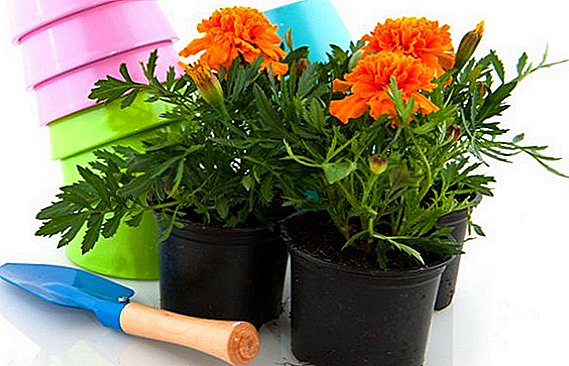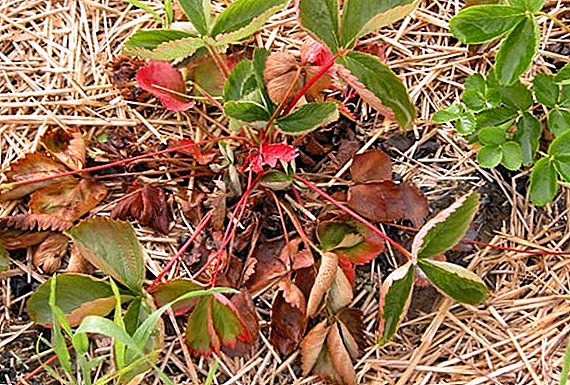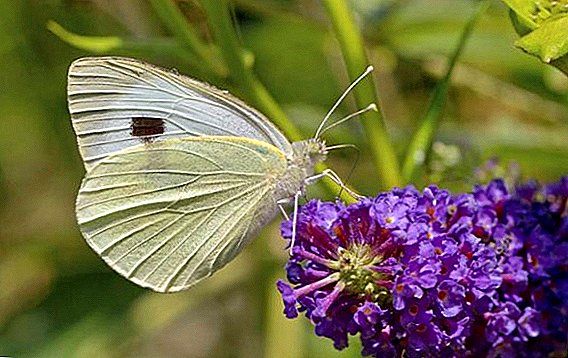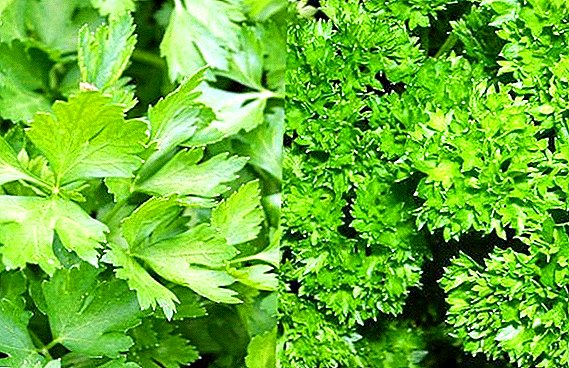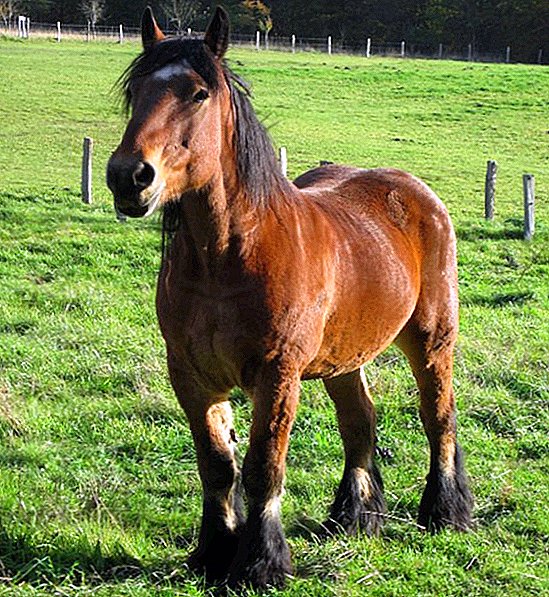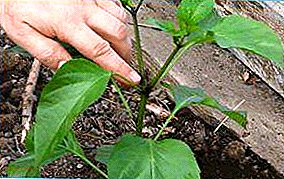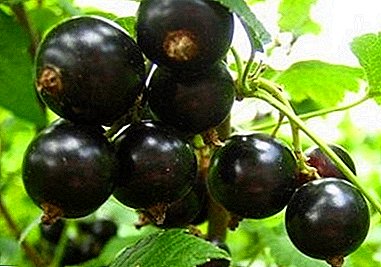
Almost every summer cottage you can see black currant bushes.
They perform not only a decorative function.
The fruits and leaves of the plant are widely used in cooking and as a natural healing agent.
One of the most unpretentious and prolific varieties - Gullivercan be successfully bred in the central region of Russia.
Description of the variety "Gulliver"
The variety is a vigorous shrub of medium density, occupying a fairly extensive area. Shoots its light green or olive, with a curved thick stem. The brushes are not lowered, slightly winding, thick, with 9–17 flowers each. The leaves are dark green, shiny, wrinkled, with three pointed blades located at an acute or right angle.
The flowers are medium-sized, red-purple, bright sepals. The stem is of medium length, thin. The berries are quite large, rounded. Their weight can reach 3.2 g.
The dense shell protects the fruit from cracking, which facilitates storage and transportation. Thanks to the pleasant sweet-sour taste of Gulliver variety, it can be eaten raw or canned. Especially good jam is obtained together with summer varieties of apples: Solntsedar, Wonderful, Southern, Yellow Sugar, Daughter Papirovki.
The variety was obtained by crossing the Seedling variety Dove varieties and lines 32-77 at the All-Russian Research Institute of Lupine.
A photo





Currant features
Gulliver refers to varieties of medium ripening. It is stress-resistant, easily tolerates temperature fluctuations and is insensitive to spring and winter frosts, as well as drought. The average yield is about 9 t / ha. Self-fertility and precocity make it attractive to gardeners.
For Gulliver is characterized by self-pollination or cross-pollination by other varieties.
Breeding
The shrub differs from other varieties of black currant by its strong growth, therefore it should be planted less often (3.0 x 1.2-1.5 m). For the same reason it is necessary to trim the bushes more intensively.
For varieties Gulliver 3 breeding methods can be used:
- cuttings;
- layering;
- division of the bush.
 It is preferable to plant shrubs in autumn (late September - early October) or in early spring, but then the rooting process will be more difficult.
It is preferable to plant shrubs in autumn (late September - early October) or in early spring, but then the rooting process will be more difficult.
For dividing the bush it is necessary in early spring to high up the base of the stem of the plant from which it is planned to obtain seedlings.
In September, a bush is dug, and young shoots are transplanted to a permanent place.
As cuttings for breeding, only one-year intact shoots about 7 cm thick and 20 cm long are suitable. Under the buds, the trunk should be cut at a 45º angle, and the opposite cut should be flat.
The cuttings are planted in a previously dug soil at an angle of 45º, leaving 2 buds on the surface. The soil is leveled, moistened and mulched with peat or compost.
Cuttings need to cover with a darkened film with slits. With proper care next year sprouts can be transplanted to their designated place.
Propagation by horizontal layouts is used more often than previous methods. To do this, around the bush, which was chosen as uterine, make small holes.
In early spring, annual shoots need to be shortened slightly to activate the process. kidney formation. Then the tops of the shoots are laid in the grooves, fixed with staples and covered with earth. When the vertical shoots reach a height of 8 cm, they spud.
At the same time it is necessary to monitor the soil moisture and dig up weeds in time. Autumn young spikes can transplant.
Care
Sort Gulliver loves moisture, so it is desirable for him to choose a lowland area, but with access to sunlight.
Watering
Watering should be carried out as necessary, focusing on weather conditions. Currant especially in need of moisture in June, when the berries ripen.
In autumn, it is advisable to dig over the ground around the bush or to loosen it so that the soil remains moist.
Nutrition
Plant needed feed up every year or as a last resort in a year. If the bush was planted in a hole with fertilizers, then the first couple of years the sapling does not need additional recharge.
Pruning
Trim for varieties Gulliver especially needed.
It should be carried out in early spring or late autumn.
It is important not only to thin the shrub, but also to cut off all diseased and broken branches.
Shoots older than 5 years should be removed.
On one garden plot together with black currant, it is not forbidden to plant a red one, for example, varieties: Jam, Natalie, Beloved, Andreichenko.
Diseases and pests
The plant is resistant to diseases like anthracnose, powdery mildew, kidney mite and rust.

But the defeat of other pests characteristic of most other varieties, Gulliver susceptible (steklyanitsa, gooseberry sprout aphid, ognevka, blackcurrant berry sawfly, currant gallitsa).
To avoid the emergence of parasite larvae and save bush healthy, it is necessary to prune old and damaged branches in time, dig up the soil in autumn, regularly spray the plant with Actellic.
<что касается="" самых="" распространенных="" заболеваний="" садовых="" культур,="" таких="" как="" антракноз,="" хлороз,="" бактериоз,="" оидиум="" и="" милдью,="" краснуха,="" selo.guru/ptitsa/bolezni-p/gribkovye/parsha.html="" и="" ржавчина,="" бактериальный="" рак="" и="" бактериальный="" ожог,="" то="" подробно="" с="" ними="" вы="" можете="" ознакомиться="" на="" нашем="">
Gulliver refers to varieties black currant, the cultivation of which is pleasant and not at all troublesome. This shrub will please not only with juicy and tasty berries, but also decorate the site with its appearance.


